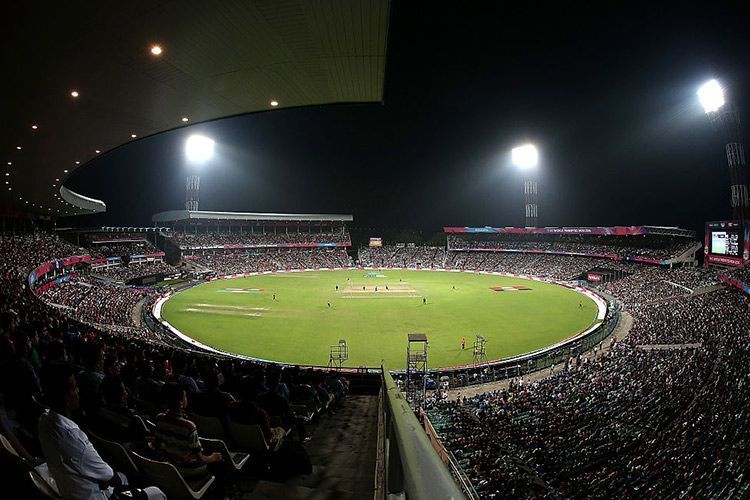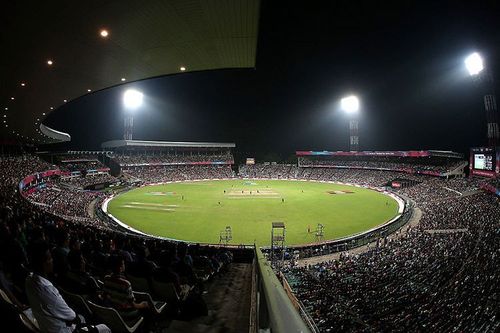
Pros and cons of Day/Night Test matches

Team India will play their first-ever Day Night Pink Ball Test match against Bangladesh at the historical Eden Gardens in the City of Joy, Kolkata from November 22. Not only will it be the first ever Pink Ball game to held in the country, it will also be the first time the two respective countries turn out for such a game.
Australia had invited the Indian team to play a Day/Night Test match on their tour Down Under last year, which was vehemently rejected by the BCCI. Citing the Indian team's lack of practice against the Pink Ball, the Virat Kohli-led team, then, had rather preferred going for the kill in traditional Test matches, and the decision proved to work in their favour as they went on to complete a historical series win against the hosts.
This time, however, the Indian side readily agreed to host the Bangla Tigers after the new BCCI President Sourav Ganguly initiated the idea to skipper Kohli, who has been concerned over the lack of spectator turn-outs at the stadiums during a Test match. With Kolkata likely to have a full house on the first three days of the Test match, Test cricket is likely to get a makeover. But is it all positive?
We look at some pros and cons of the Day/Night Test match.
Pro: Full houses, more viewership
The first ever Day/Night Test match in India at the Mecca of Cricket at Eden Gardens will see over 65,000 people along with a host of dignitaries over the first three days throng the stadium. What works is the start time of 1:00 PM, which allows the die-hards to be present at the stadium for the last two sessions after attending work from 9:00 AM . The traditional Test runs from 9:30 AM to 5:00 PM, which makes it tough for the regular office-goers to be present at the ground for all five days.
The spectacle will also garner huge views on TV, which in turn means more revenue for the format that is under severe threat. Test cricket is said to have been sidelined due to the emergence of the T20 and the T10 leagues but if the format can reinvent itself and remain relevant to the fans, it will be able to carve out its own niche.
Con: Takes away the advantage of spinners
All the talk ahead of the second Test against Bangladesh is how the seam bowlers from either side will relish bowling with the pink ball due to the abundance of swing that will be on offer. Unlike the traditional red-ball that gets old after 10-15 overs of play, the pink ball due to the extra layers of paint around it, will remain fresh for at least 25 overs. The Eden curator has also mentioned that a layer of extra grass will be left behind at the wicket to prevent it from scuffing.
This, in particular, is highly problematic for the Asian teams, who rely a great deal on the spinners to win them Test matches. Combined with dew, the grass creates treacherous conditions, much akin to the conditions that are found in South Africa, England, New Zealand and Australia. The dry tracks that turn square on the last two days of a traditional game poses a great challenge to the visiting SENA nations, but, with the Day/Night games negating the threat of the spinners a great deal, the Asian nations might not be keen to play very frequently.
Pro: Playing at an optimal physical time
According to a research by Michael Smolensky, the physical performance of athletes is higher between 3:00 PM and 6:00 PM. This is a major reason why almost every record in the track-and-field and cycling events have been broken in the afternoon or evening.
Smolensky suggests that this could be because of the increased body temperature later in the day that gives the players a "natural pre-warmup." Research also says that our lungs work more efficiently at around 5:00 PM than at midday and while more research needs to be done at how cricketers are impacted, if even some of the body's functionality is better in the evening, we could see the seamers bowling with more venom and the batters hitting with more strength.
Con: More entertainment than tradition
Skipper Virat Kohli, while excited at the prospect of playing the maiden Day/Night Test, in his pre-match press conference ahead of the second game stated that the traditional Test match still remains the holy grail, and that the beauty of facing the red cherry early in the morning will have its own place. Kohli said,
"I think this can be a one-off thing but it should not be a regular scenario. In my opinion, this should not become the only way Test cricket is played. Because then you are losing out on that nervousness of the first session in the morning."
"You can bring excitement into Test cricket but you can't purely make Test cricket based on just entertaining people. Entertainment of Test cricket lies in the fact that a batsman is trying to survive a session and the bowler is trying to set up a batsman (to get him) out. If people don't respond to that, too bad."
It, thus, gets clear, that the Day/Night format will remain a novelty rather than a full-time affair. Its focus remains more on attracting crowds and increasing the excitement towards Tests than ensuring that the traditional Test is packed to the rafters. While Day/Night matches might get a full house, it is no guarantee that the Day Tests will see huge numbers as well. The purpose then, of Pink Ball games, which is to increase the interest towards Tests, might just not get served.